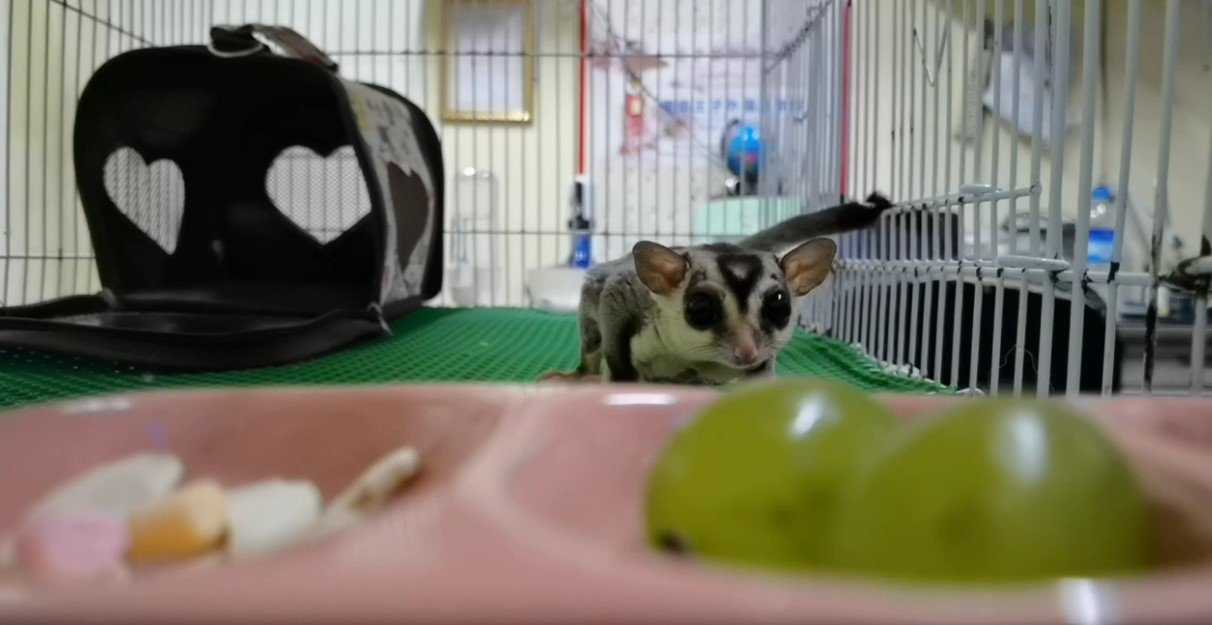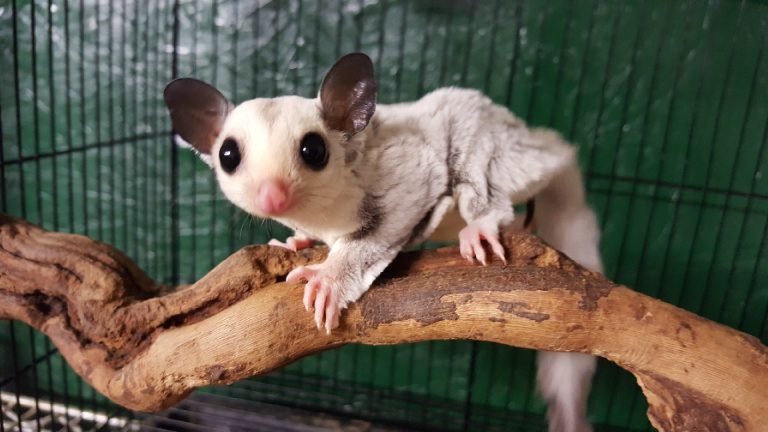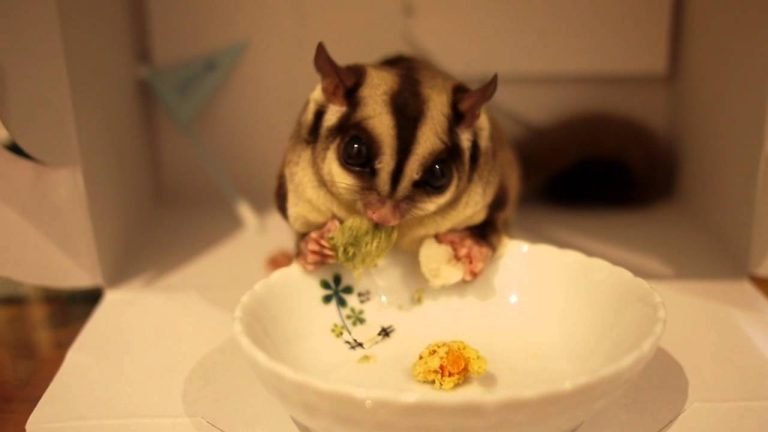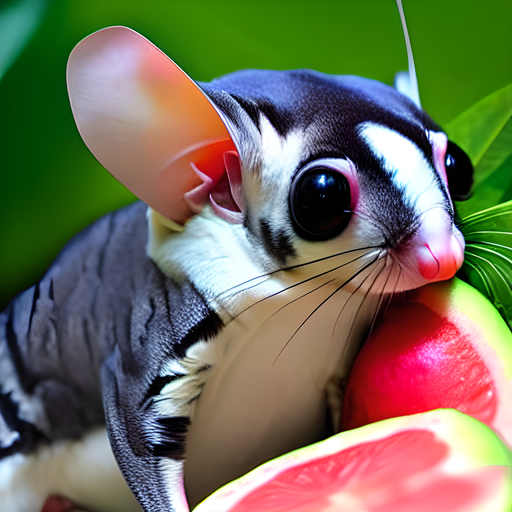Can You Pass The Sugar Glider Food Test
Are you wondering if your sugar glider’s diet is up to par? Can you pass the sugar glider food test? Well, let me tell you, a proper diet plays a crucial role in ensuring your furry friend’s overall health and well-being. It’s not just about satisfying their taste buds; it’s about providing them with the right fuel for optimal growth, energy levels, and immune system function.
Feeding your sugar glider a balanced and nutritious diet is essential. A poor diet can lead to various health issues, causing problems like poor grooming or infections. These little sugar bears may be small in size, but they have specific dietary needs that must be met. Many pet owners are unaware of this fact and unknowingly use inadequate food sources.
So, what should you feed your sugar gliders? While there are different diets available—ranging from kibble diets to fresh diets—it is important to ensure they receive enough protein in their daily intake. Providing them with a protein-rich diet will help support their tissue health and overall vitality.
Understanding Sugar Glider Dietary Needs and Essential Nutrients
Meeting the Nutritional Needs of Your Furry Friends
Sugar gliders may be small, but their nutritional needs are mighty! To ensure optimal health and happiness for these adorable creatures, it’s crucial to understand their dietary requirements.
Balanced Diet: Proteins, Fruits, Vegetables, and Supplements
A well-rounded diet is key. These little critters require a combination of proteins, fruits, vegetables, and supplements to meet their nutritional necessities.
Proteins play a vital role in the growth and development of sugar gliders. They provide amino acids that are essential for building strong muscles and promoting overall well-being. Good sources of protein for your furry friend include:
- Mealworms
- Crickets
- Boiled chicken
- Hard-boiled eggs
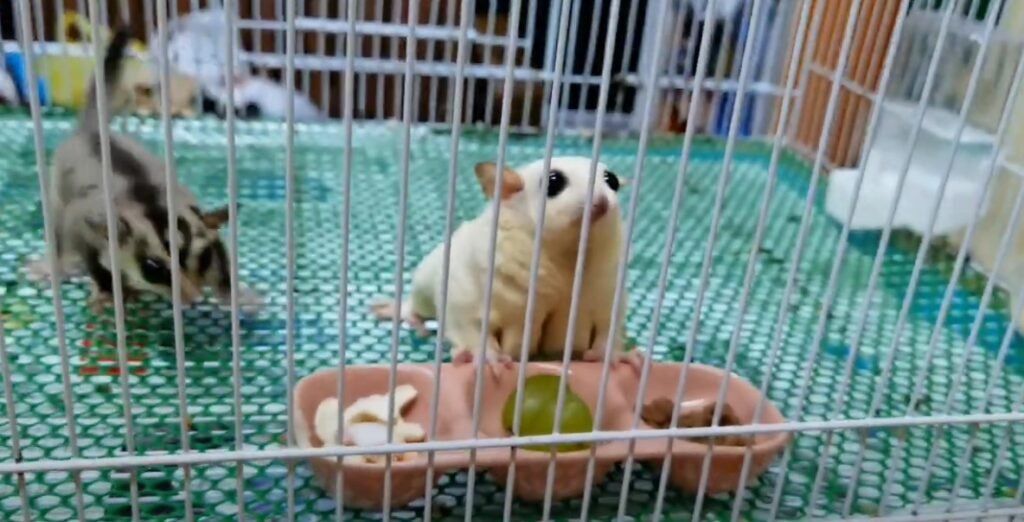
Fruits and vegetables should also be included in your sugar glider’s diet. These provide important vitamins and minerals necessary for their overall health. Some examples of suitable fruits and veggies include:
- Apples
- Grapes
- Blueberries
- Carrots
- Spinach
Supplements are an excellent way to ensure that your sugar glider receives all the essential nutrients they need. Calcium is particularly important as it helps prevent calcium deficiency disease (metabolic bone disease). Vitamin A promotes good vision while vitamin D3 aids in calcium absorption. Consult with an exotic nutrition expert or animal nutritionist to determine the appropriate supplements for your pet.
The Importance of Essential Nutrients
To maintain optimum health, sugar gliders require specific essential nutrients. Let’s take a closer look at some of these vital components:
- Vitamins: Sugar gliders need a variety of vitamins to support their bodily functions. Vitamin A is crucial for proper eye function and a healthy immune system.
Common Mistakes in Feeding Sugar Gliders: What to Avoid
1. Feeding High-Sugar and High-Fat Foods
One of the most common mistakes when feeding sugar gliders is offering them foods that are high in sugar or fat content. While these treats may seem tempting, they can lead to obesity and other health issues for your furry friend. It’s important to remember that sugar gliders have specialized dietary needs, and a diet high in sugary or fatty foods can contribute to weight gain, tooth decay, and overall poor health.
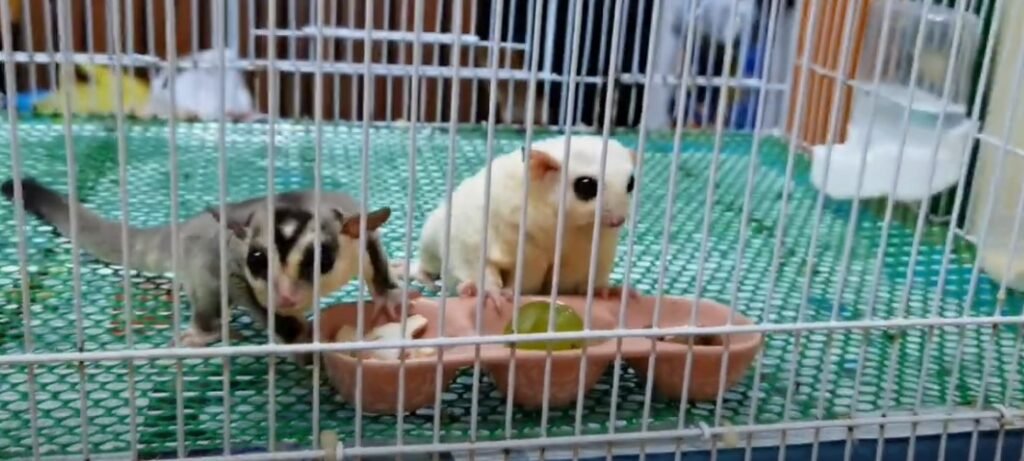
To avoid this mistake, opt for a balanced diet that includes a variety of nutritious foods. This can include fresh fruits like apples, grapes, and berries, as well as vegetables like carrots and leafy greens. You can provide protein sources such as cooked chicken or insects like mealworms or crickets. By focusing on nutrient-rich options instead of high-sugar or high-fat treats, you’ll be promoting your sugar glider’s overall well-being.
2. Overreliance on Commercial Diets
While commercial diets formulated specifically for sugar gliders can be convenient, it’s important not to rely solely on them for your pet’s nutrition. These diets should be considered as a base and supplemented with fresh foods to ensure a well-rounded diet.
Fresh fruits and vegetables play a crucial role in providing essential vitamins and minerals that may be lacking in commercial diets alone. They also offer variety and enrichment for your sugar glider’s palate. Consider offering small portions of fresh produce alongside the commercial diet to enhance their nutritional intake.
3. Feeding Toxic Foods
Some foods are toxic to sugar gliders and should never be included in their diet under any circumstances. Chocolate, caffeine-containing products (like coffee or tea), onions, garlic, avocadoes – these are just some examples of what you should steer clear from feeding your furry friend.
Recommendations for a Healthy Sugar Glider Diet and Food Options
Variety is Key to a Balanced Diet
Providing a diverse range of food options is essential. These adorable little creatures love their treats, so make sure you offer them a variety of fresh fruits like apples, grapes, and melons. Not only will these sweet foods satisfy their taste buds, but they also provide important vitamins and minerals.
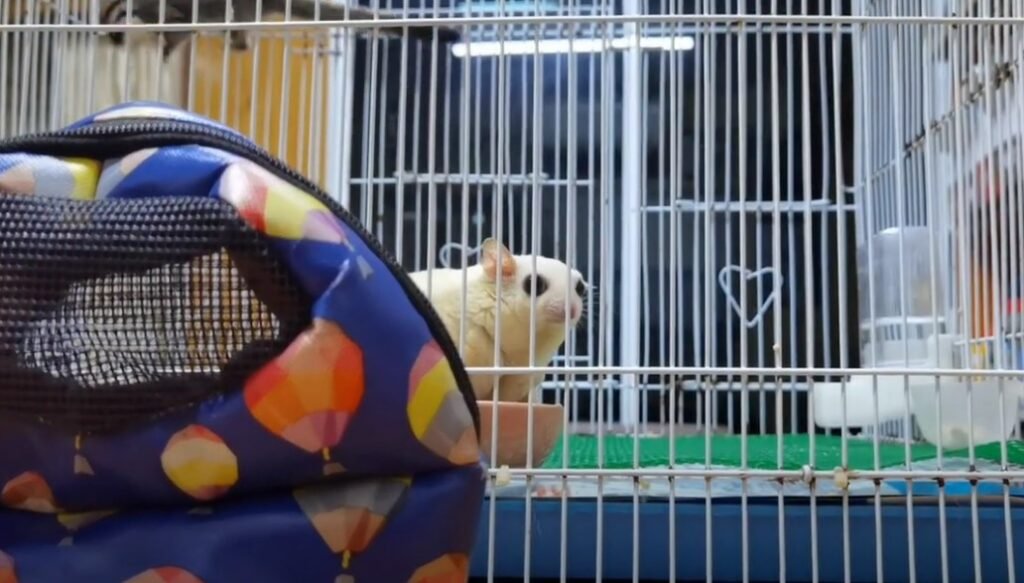
Protein Power
Sugar gliders are active critters that need plenty of protein in their diet. To meet their protein needs, consider offering cooked chicken or insects like mealworms as part of their meals. These protein sources help support muscle development and overall growth in sugar gliders.
Specialized Pellet Diets
While fresh fruits and protein sources are vital components of a sugar glider’s diet, it’s also worth considering specialized pellet diets formulated specifically for these small marsupials. These complete sugar glider diets ensure that your furry friend gets all the necessary nutrients in one convenient package. Look for premium sugar glider diets that contain high-quality ingredients to support optimal health.
In addition to the talking points mentioned above, here are some more food options you can include in your sugar glider’s diet:
- Vegetables: Offer leafy greens like spinach or kale as an additional source of vitamins and fiber.
- Nuts: Give your sugar glider small amounts of unsalted nuts such as almonds or walnuts for added healthy fats.
- Yogurt Drops: As occasional treats, yogurt drops can be enjoyed by your sugar glider while providing calcium and probiotics.
- Honey Sticks: Sugar gliders have a sweet tooth! Provide honey sticks as an occasional indulgence.
Remember to introduce new foods gradually to prevent digestive upset in your pet. It’s also crucial to avoid feeding them sugary processed foods or anything containing caffeine or chocolate.
The Role of Calcium and Protein in Supporting Sugar Glider Nutrition
Adequate calcium intake is essential for healthy bone development in sugar gliders.
Sugar gliders, like all animals, require a sufficient amount of calcium to support their bone health. Calcium plays a vital role in the development and maintenance of strong bones and teeth. Without enough calcium, sugar gliders may experience weakened bones, which can lead to fractures or other skeletal issues.
To ensure your sugar glider is getting enough calcium:
- Provide a balanced diet that includes foods rich in calcium such as leafy greens, broccoli, and yogurt.
- Consider offering a calcium supplement specifically formulated for sugar gliders.
- Avoid feeding high-phosphorus foods excessively as they can interfere with calcium absorption.
Protein plays a crucial role in muscle growth, tissue repair, and overall body function.
Protein is an essential macronutrient that supports various functions within the body. In sugar gliders, protein is particularly important for muscle growth and repair as well as maintaining overall body function. It aids in the development of strong muscles and tissues necessary for optimal movement and agility.
Here are some ways to ensure your sugar glider gets enough protein:
- Offer animal-based proteins such as cooked chicken or mealworms.
- Incorporate vegetable proteins into their diet through sources like tofu or lentils.
- Consider providing a protein supplement designed specifically for sugar gliders.
Balancing calcium-to-phosphorus ratio is important to avoid metabolic bone disease.
Maintaining the right balance between calcium and phosphorus is crucial for preventing metabolic bone disease (MBD) in sugar gliders. MBD occurs when there is an imbalance between these two minerals, leading to weak bones, deformities, or even death if left untreated.
To maintain a proper calcium-to-phosphorus ratio:
- Offer foods with an appropriate balance of both minerals. For example, provide equal amounts of high-calcium and low-phosphorus foods.
Introducing New Foods to Your Sugar Glider’s Diet: Tips and Guidelines
Gradually introduce new foods to prevent digestive upset or refusal by the sugar glider.
It’s important to take things slow. These exotic pets have sensitive tummies, so introducing new foods gradually is crucial to avoid any digestive issues or refusal. Start by offering small portions of the new food item alongside their regular diet. This way, you can monitor their reaction and ensure they tolerate it well before increasing the quantity.
To make this process easier, consider mixing a small amount of the new food with their current staple food. This will help them get accustomed to the taste and texture without overwhelming their system. Over time, gradually increase the proportion of the new food while reducing the old one until they are comfortable eating only the new addition.
Monitor any allergic reactions or adverse effects when introducing new food items.
Just like humans, sugar gliders can also have allergies or adverse reactions to certain foods. While introducing something new into their diet, keep a close eye on any signs of discomfort or unusual behavior. Common symptoms of an allergic reaction may include itching, swelling, sneezing, or gastrointestinal distress.
If you notice any concerning reactions after introducing a specific food item, remove it from their diet immediately and consult with a veterinarian experienced in exotic pet care. It’s always better to be safe than sorry.
Offer small portions initially to gauge their acceptance before increasing the quantity.
Sugar gliders can be picky eaters at times, so it’s essential to assess their acceptance of new foods before going all-in. Begin by offering small portions as a snack or treat alongside their regular meals. Observe how eagerly they consume it and whether they show interest in trying more.
If your sugar glider happily devours the offered portion without hesitation, you can gradually increase the quantity.
Conclusion
Maintaining optimal health for your sugar glider starts with providing a balanced diet that meets their specific dietary needs. Understanding the essential nutrients and avoiding common feeding mistakes are key to ensuring their well-being. By following recommendations for a healthy sugar glider diet and considering various food options, you can support their nutrition effectively.
Calcium and protein play vital roles in supporting sugar glider nutrition. Calcium is crucial for bone health, while protein helps with muscle development and overall growth. Incorporating foods rich in these nutrients into their diet will contribute to their overall health.
Introducing new foods to your sugar glider’s diet can be done gradually, keeping in mind that they may have preferences or aversions. Tips and guidelines can help you navigate this process smoothly, ensuring a diverse range of food options that meet their nutritional requirements.
In conclusion, maintaining a balanced diet is essential for the well-being of your sugar glider. By understanding their dietary needs, avoiding common mistakes, providing recommended foods, and introducing new options carefully, you can support their optimal health.
Remember to consult with a veterinarian knowledgeable about exotic pets for personalized advice on your sugar glider’s specific needs. With proper care and attention to their diet, you can ensure a happy and healthy life for your furry friend.
FAQs
1.How often should I feed my sugar glider?
Sugar gliders should be fed daily; provide fresh food every evening.
2.Can I give my sugar glider fruits as treats?
Yes, fruits can be given as occasional treats but should not make up the majority of their diet due to high sugar content.
3.Are there any foods that are toxic to sugar gliders?
Yes, certain foods like chocolate, caffeine, onions, garlic, and avocado are toxic to sugar gliders and should be avoided at all costs.
4.Do I need to provide supplements for my sugar glider?
It is recommended to provide a calcium supplement, such as powdered calcium or cuttlebone, to ensure they receive enough of this essential nutrient.
5.Can sugar gliders eat insects?
Yes, insects are an important part of their diet and can be offered as a protein source. Ensure the insects are gut-loaded and free from pesticides.

